
JLPT N2 Grammar に沿って (ni sotte) Meaning
にあたり/あたって【意思】要做~的時候【用法】v辞書形・n+にあたり備註:多用於會議致詞或感謝信等…【例句】①卒業.

JLPT N2 Grammar に際して (ni saishite) Meaning
に 当 (あ) たり or に 当 (あ) たって is a formal grammar pattern in Japanese used to convey the meaning of 'at the time of (A)', 'when doing (A)', or 'on the occasion of (A)'. Like に 際 (さい) して 'on the occasion of (A)', it will often be used in regard to preparation for future events. This structure is a combination of に, and the う-Verb 当 (あ) たる 'to hit', or.
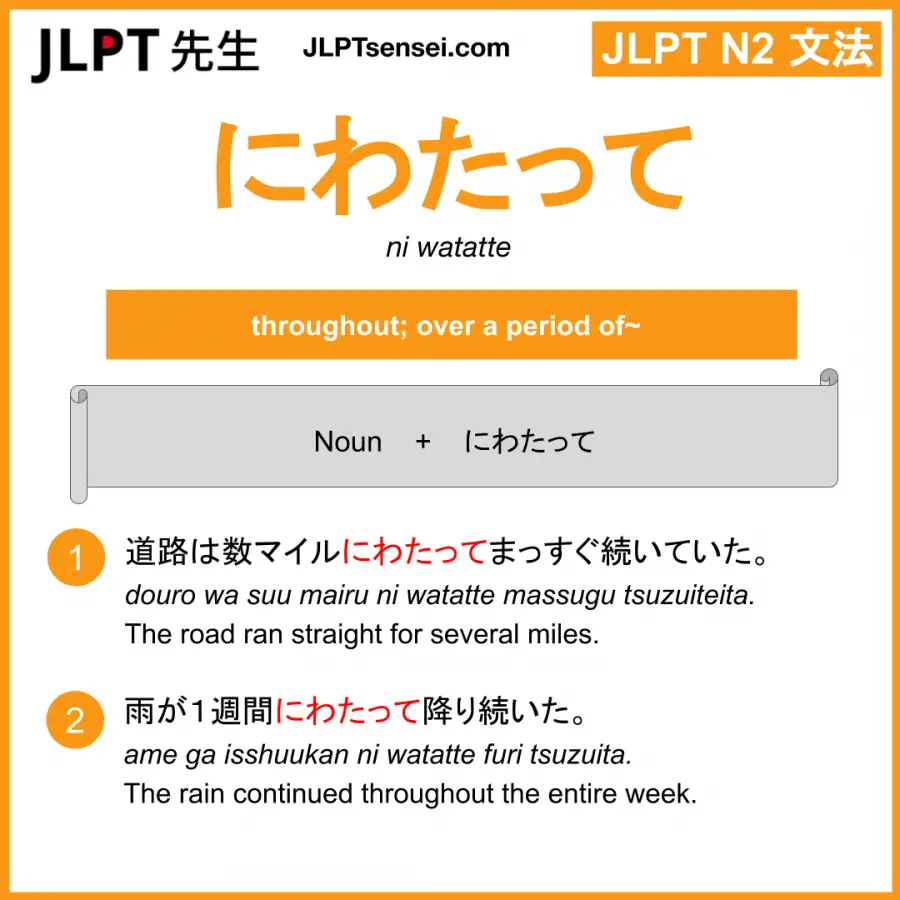
ni watatte にわたって jlpt n2 grammar meaning 文法 例文 learn japanese
にあたって/にあたり【N2 Grammar】文法と例文:「試合に臨むにあたって、チームの戦略をもう一度いちど確認した方がいい.
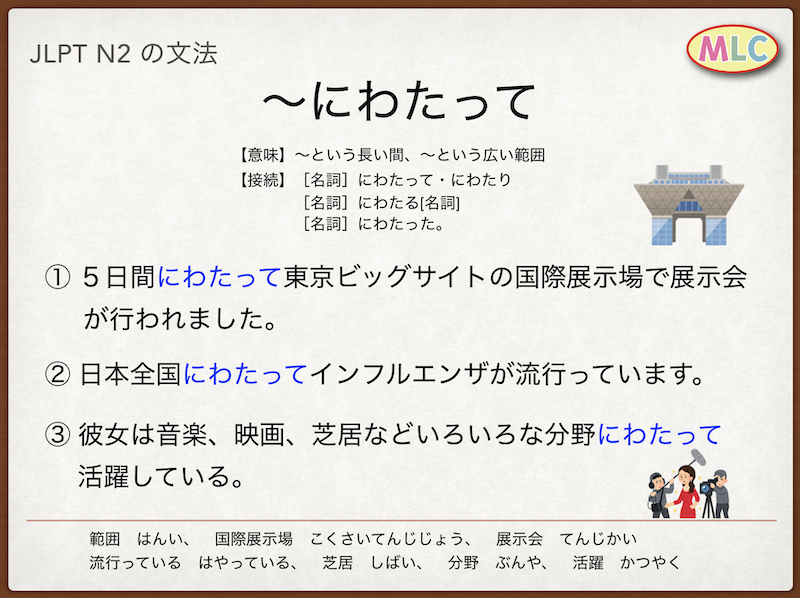
JLPT N2の文法 grammar ~にわたって MLC Japanese Language School in Tokyo
Verb (dictionary form) にあたって (は) にあたり. Noun. Learn Japanese grammar: にあたって (ni atatte) / にあたり (ni atari). Meaning: at the time; on the occasion of ~. Click the image to download the flashcard. Download all N2 grammar flashcards. Download our complete.
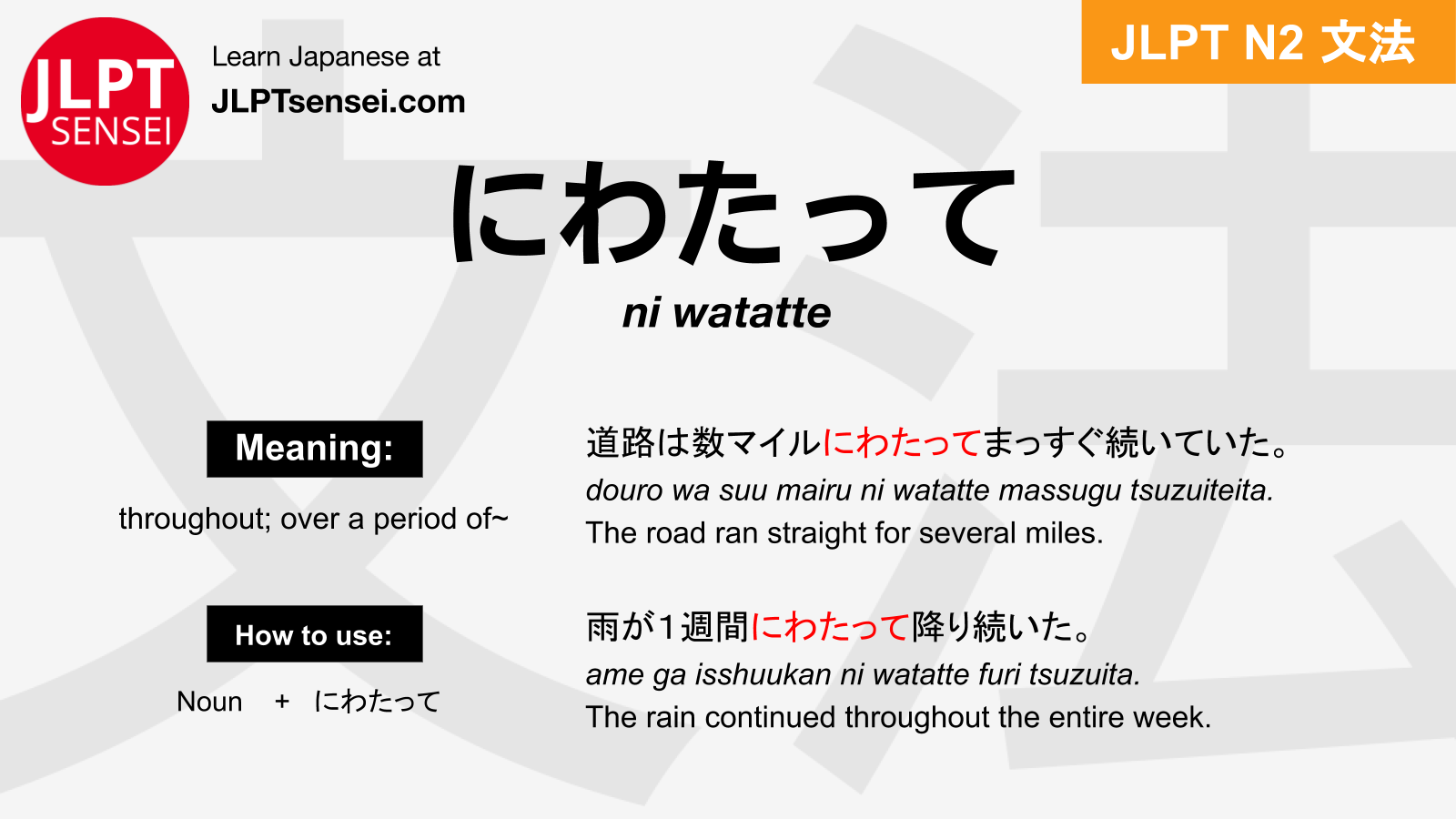
JLPT N2 Grammar にわたって (ni watatte) Meaning
例文 ・皆さん、 jlpt を受ける にあたって 、大切なことを伝えておきます。 ・会社の面接を受ける にあたり 、受ける会社の情報だけでなく、ライバル会社について調べておくことも大切だ。 ・卒業 にあたり 、皆さんに贈りたい言葉があります。 ・卒業研究の発表 にあたり 、資料の準備は.

JLPT N3 Grammar に対して (ni taishite) Meaning
www.edewakaru.com. 〜に際して|日本語能力試験 JLPT N2文法 : 絵でわかる日本語. 【接続】動詞[辞書形]+に際して名詞[辞書形]+に際して【意味】〜する前(まえ)に〜する〜する時に〜する〜を始(はじ)める時に〜する【例文】①留学(りゅうがく)に際.

JLPT N1 Grammar にしたって / にしたところで (ni shitatte / ni shita tokoro de
n2を 受験する にあたって 、毎日5時間勉強した。=n2の 受験 にあたって 、毎日5時間勉強した。 入院 にあたって 、必要な荷物を準備しなければならない。 就職 にあたり 、アパートを探すつもりです。 卒業 にあたって 、友達みんなで卒業旅行に行った。

N2文法「〜にあたって/〜にあたり」の意味、接続、例文 日本語教師reiのブログ
The JLPT (Japanese Language Proficiency Test, 日本語能力試験) is the standard test of Japanese language ability for non-Japanese. would first come up in level. Kanshudo displays a badge indicating which level of the JLPT words, kanji and grammar points might first be used in: indicates N5 (the first and easiest level)

JLPT N4 Grammar て / で (te / de) Conjunctive Particle Meaning
JLPT N1 Grammar: とあれば (to areba) Meaning if it is the case that; if ~ JLPT N1 Grammar: あっての (atte no) Meaning which can exist solely due to the presence of; which owes everything to; JLPT N3 Grammar: において / における (ni oite / ni okeru) Meaning in; at (place); regarding; as for; in relation to ~

Learn JLPT N2 Grammar にわたって (ni watatte)
N3 Kanji: 渡 (to, wataru) Meaning: transit, ferry, cross. Learn Japanese grammar: に渡って 【 にわたって 】 (ni watatte). Meaning: throughout; over a period of ~. This is usually used in hiragana form and can be conjugated and used in various forms, including: にわたる (ni wataru). にわたり (ni watari). にわたった (ni.

JLPT N2 Grammar に応えて (ni kotaete) Meaning
新年を迎えるにあたって,一年の計画を立てた. The whole year was planned for welcome new year. *This grammar is used to indicate time when one faces something formal. The compound particle is primarily used in written Japanese. When a verb precedes it, the verb is often a Sino-Japanese する verb, as in example #6306. *The.

Learn JLPT N2 Grammar にあたって/にあたり (ni atatte/ni atari
Aをする前にBをする. ※「Aするのに前もってBをする」と言いたいときに使う。. ※Aは何かを決意するような特別なことに使うことが多い。. (例)「入学・卒業・結婚・受験」などの名詞やそれらの動詞 (「入学する」など)が来る. ※硬い言い方なので、普通.

JLPT N2 Grammar にあたって (ni atatte) Meaning
にあたる (ni ataru) Meaning: Corresponds to; coincide with; in; at.. How to use the: Noun +にあたる. Explain: Used when expressing a corresponding thing / thing, similar to, identical to or equivalent to another object / incident. Use express seriously a particular situation, occasion, time. Example sentences:

Learn Japanese Grammar Ni Taishite ( に対して) Muchammad Lutfi's Blog
Access the most comprehensive library of K-8 resources for learning at school and at home. Get thousands of teacher-crafted activities that sync up with the school year.
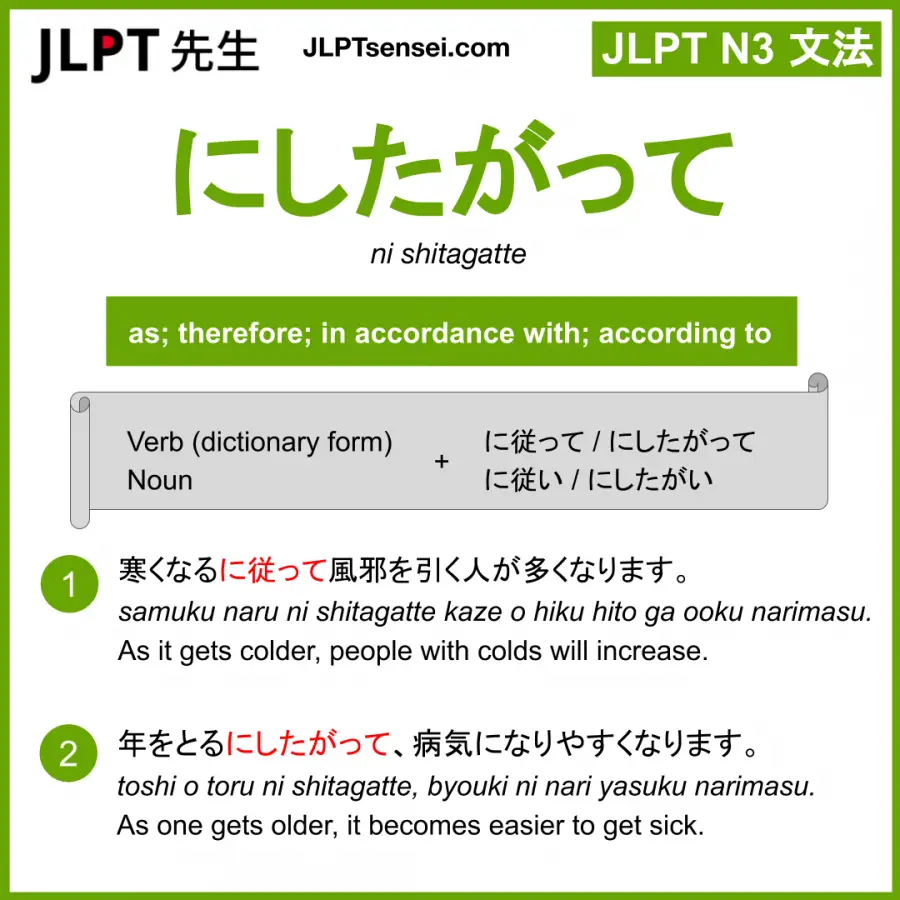
JLPT N3 Grammar にしたがって (ni shitagatte) Meaning
Learn and improve every time you write with Grammarly's real-time suggestions. With just a few clicks, clean up typos, grammatical mistakes, and misplaced punctuation.
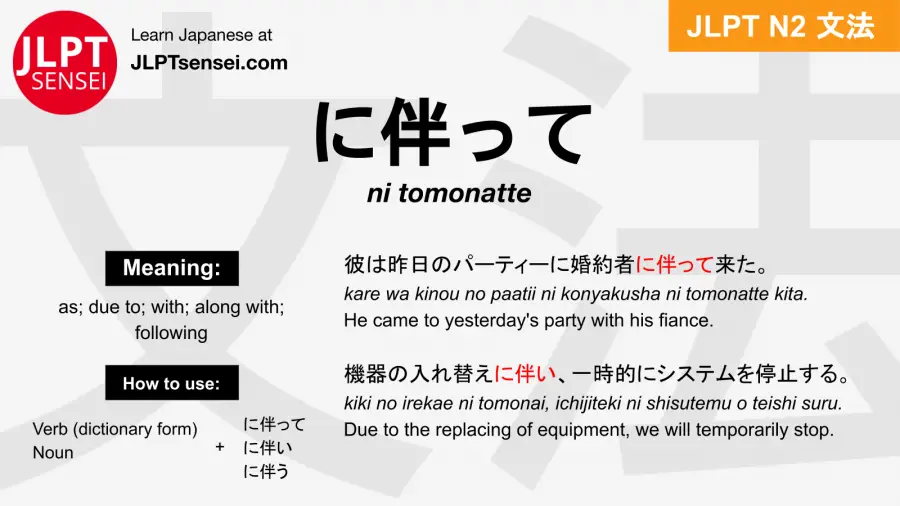
ni tomonatte に伴って にともなって jlpt n2 grammar meaning 文法 例文 japanese
に 当 (あ) たり or に 当 (あ) たって is a formal grammar pattern in Japanese used to convey the meaning of 'at the time of (A)', 'when doing (A)', or 'on the occasion of (A)'. Like に 際 (さい) して 'on the occasion of (A)', it will often be used in regard to preparation for future events. This structure is a combination of に, and the う-Verb 当 (あ) たる 'to hit', or.